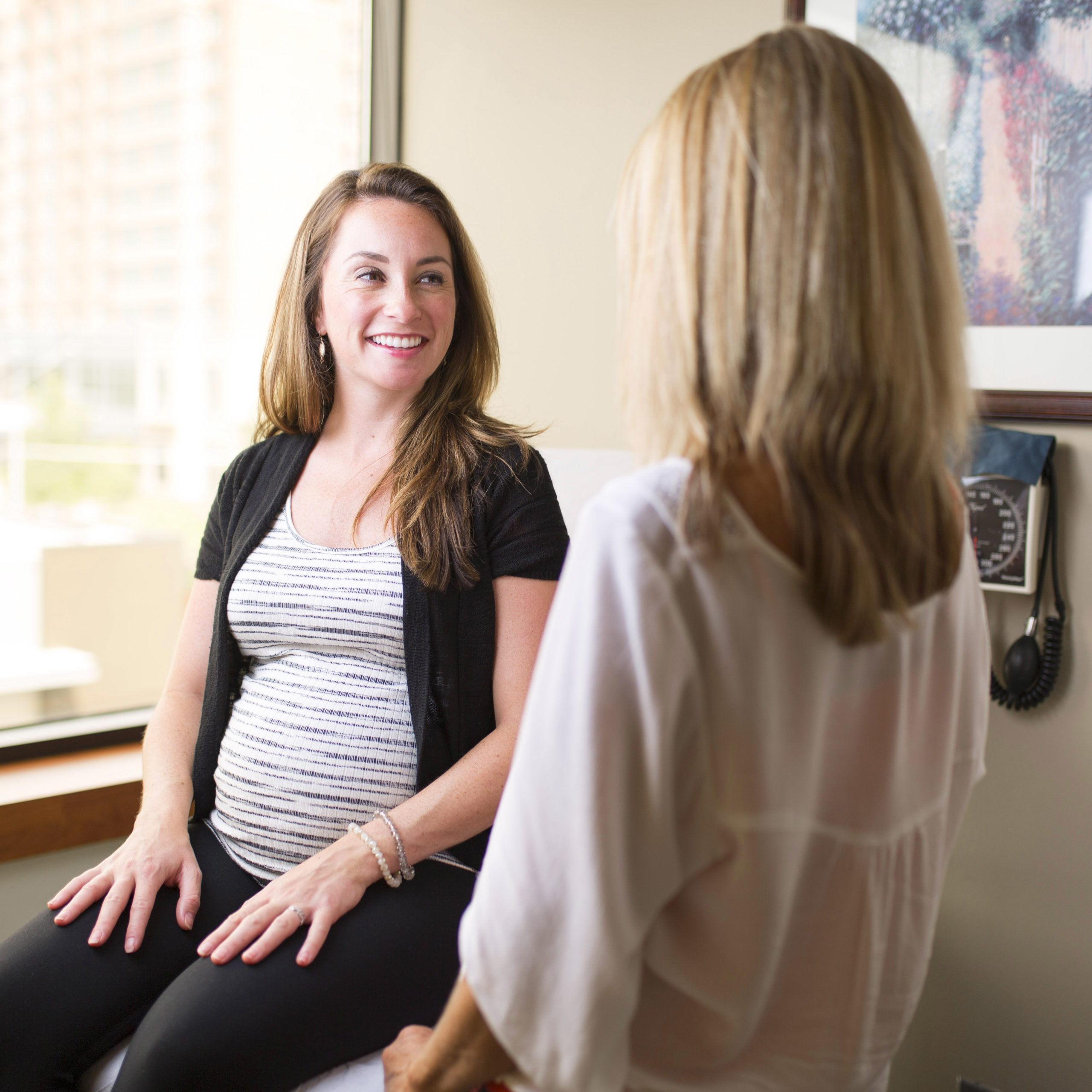An external cephalic version is a procedure to turn a breech baby while still in the mother’s belly. Here’s one mother’s external cephalic version story.
Growing up, my sister, Melissa, and I often heard stories about Melissa being breech and how my mom had to have a cesarean section because of it.
I never dreamed that almost 30 years after my sister’s birth, I would have to consider a C-section for the same reason. Thankfully, my story turned out differently than my mom’s because I had a successful external cephalic version (aka: a version) at Vanderbilt University Medical Center.
We learned that my daughter, Adeline was breech when I was about six months pregnant and tried many alternative methods to get her to turn. At one point, we thought Adeline had turned, but looking back, I think we were wrong.
I really wanted a vaginal birth, so our last option was to have an external cephalic version, a procedure to turn around a breech baby before labor begins.
I spent a lot of time talking with people who had both successful and unsuccessful versions, as well as health professionals.
The positives and negatives
Important details that made a version more likely to be successful:
- This was my second baby, making my abdomen more pliable during a version.
- I had a more than average amount of amniotic fluid (low fluid can injure the baby).
- Adeline had not dropped into the pelvis.
- She was frank breech (bottom down, not feet down).
The factors that were against us:
- Adeline was a big baby. Though I had a big baby before (my son Elias was 8 pounds, 3 ounces, and they estimated Adeline was 8 pounds, 6 ounces), big babies can be harder to turn.
- I had an anterior placenta (my placenta was in front of the baby), which makes things a bit riskier.
- I was 39 weeks and one day. I have read that versions are more successful at 36-37 weeks, but my provider did not do versions prior to 39 weeks.
The hospital staff, including my midwife, really prepared me for the strong possibility of a C-section. No one seemed that optimistic, which was discouraging.
But I didn’t want to give up. Somehow, my heart still felt like we had to do it.
I was offered an epidural for the version. I was torn about having an epidural for the version because it would mean that I would have it for the birth (I wanted to try to have a natural birth). However, research has shown that versions on breech babies are more successful when the mother has an epidural because she is more relaxed.
So I decided to go for it. Ultimately, if I wanted a vaginal birth, I felt like it was the best decision.
The version
Before the procedure, the tension was palpable. Close to 15 people were in the room.
The procedure took less than five minutes. Adeline and I were monitored the whole time to make sure neither of us went into distress. They did an ultrasound to determine which way Adeline was facing, what her position was, and how they were going to rotate her.
I was laying flat on my back for the version and two doctors stood on either side of me. They slowly pressed into my stomach and turned Adeline. Because of the epidural, I did not have any pain, just a TON of pressure. At one point, I almost asked them to stop, but I gritted my teeth, knowing they were making progress and that it wouldn’t last long.
When they got her to turn, everyone started cheering. Some clapped. I cried. My husband Matthew cried.
It was amazing.
In retrospect, I could not have withstood the version without the epidural, and I would recommend it to anyone who was going to undergo this procedure.
Jessica Turner is part of Vanderbilt University Medical Center’s social media team. She loves spending time with her family, memory keeping and blogging on her popular lifestyle blog, The Mom Creative.
Was your child breech? Did you try any methods to try to get him or her to turn, or did the baby do it on his own? Share your experiences in the comments below.

Expecting or considering having a baby? Know all your pregnancy care options available through Vanderbilt Women’s Health.

